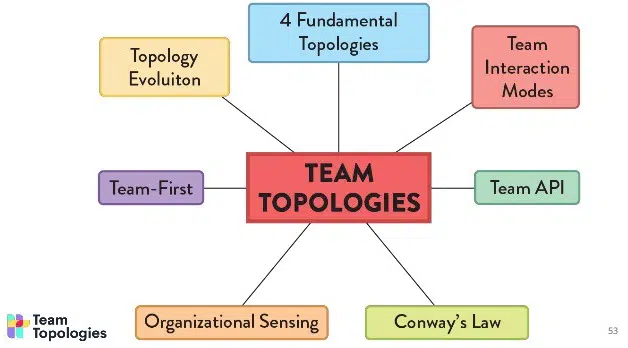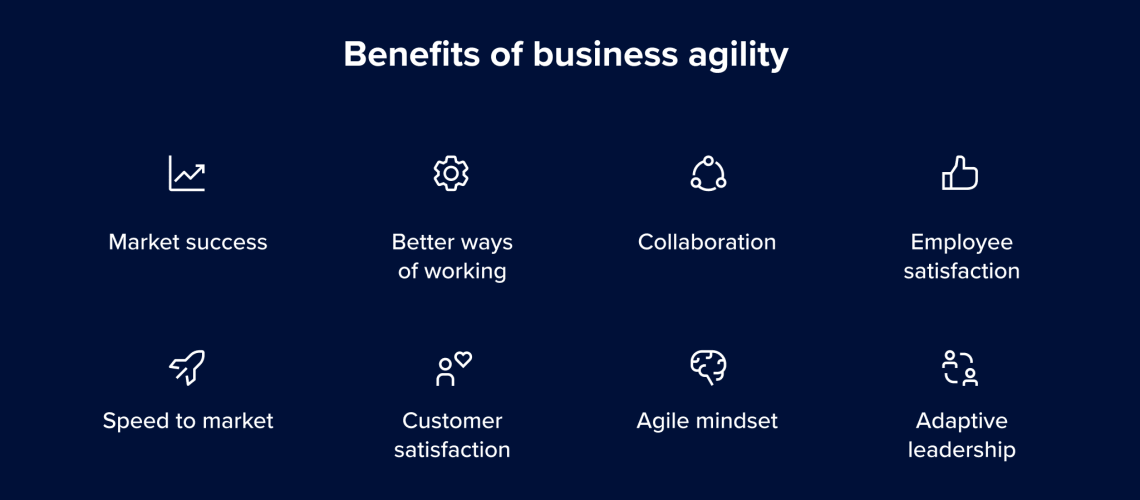As companies race to deliver value faster and more efficiently, the concept of Team Topologies is gaining traction as a smart way to organize business and tech teams. Inspired by the eye-opening book “Team Topologies: Organizing Business and Technology Teams for Fast Flow” by Matthew Skelton and Manuel Pais, let’s dive into how this approach can supercharge your business agility.
The Essence of Team Topologies
Imagine if your team dynamics were like a perfectly synchronized rock band, where each member knows their role and rocks out together to create amazing music. That’s what Team Topologies aims to achieve. It focuses on smooth workflows and reducing brain strain. It introduces four main team types and three core ways they interact, giving a clear structure that helps teams jam more freely and effectively. Here’s how these elements can transform your business:
Team Types
Stream-Aligned Teams:
- Purpose: Directly deliver value to the end-user by aligning with a specific product or service.
- Benefit: These teams have a laser focus on one goal, cutting down dependencies and speeding up delivery.
Think of them as the lead guitarists, focused on nailing that epic solo, making sure the audience (your customers) is thrilled.
Enabling Teams:
- Purpose: Help stream-aligned teams clear obstacles by providing expertise and support.
- Benefit: They’re like the roadies, setting up the gear and making sure everything works perfectly so the show can go on without a hitch.
Complicated-Subsystem Teams:
- Purpose: Handle tricky and specialized system areas that need deep expertise.
- Benefit: These are the sound engineers, fine-tuning the audio to ensure every note is crystal clear, even the most complex riffs.
Platform Teams:
- Purpose: Provide the essential services and infrastructure that other teams can use.
- Benefit: They build the stage and lighting, creating the perfect environment for everyone to perform at their best.
Core Team Interactions
Good teamwork is all about smooth communication and collaboration. Team Topologies defines three main ways teams interact:
Collaboration: Teams work closely together for a common goal. It’s temporary and focused on specific problems or features.
- Use Case: When teams need to team up for a special gig to hit a shared target.
- Benefit: Encourages knowledge sharing and sparks innovation, like a jam session where magic happens.
X-as-a-Service: One team offers a service that others use, creating clear boundaries and reducing the need for constant interaction.
- Use Case: When one team provides a service for others, like the backstage crew keeping things running smoothly so the band can focus on the music.
- Benefit: Cuts down bottlenecks and boosts autonomy with reliable and scalable services.
Facilitation: An enabling team helps a stream-aligned team improve without taking over their work.
- Use Case: When one team guides another in picking up new skills or methods without ongoing involvement, like a guest artist teaching new techniques.
- Benefit: Promotes skill transfer and empowerment, letting teams operate more independently, like musicians mastering new instruments.
Implementing Team Topologies for Business Agility
1. Assess Your Current Structure:
Start by looking at your current team setup and workflows. Spot areas where dependencies slow things down and where cognitive load is too high. This will help you decide which team types and interaction modes can solve your specific challenges.
2. Define Clear Team Boundaries:
Set clear boundaries for each team type based on their roles and expertise. Make sure each team knows its purpose and how their work ties into the bigger business goals.
3. Foster a Culture of Autonomy and Ownership:
Empower teams to make decisions within their areas, cutting down the need for cross-team approvals and red tape. Encourage a sense of ownership where teams are responsible for their outcomes and always looking for ways to improve.

4. Optimize for Fast Flow:
Focus on reducing handoffs and dependencies between teams. Use practices like continuous integration and delivery (CI/CD) to streamline work from development to production.
5. Invest in Enabling Teams:
Provide support through enabling teams that offer specialized knowledge and help when needed. This will keep performance high across all teams and help them overcome challenges quickly.
6. Leverage Technology Platforms:
Build strong platform teams that create and maintain the infrastructure and tools other teams need. By providing reliable and scalable services, platform teams help deliver value faster and more efficiently.
Conclusion
Adopting Team Topologies can turn your team into a rock band of productivity, fine-tuning your business agility by harmonizing team structures and interactions. By aligning teams with business goals, nurturing a culture of autonomy, and leveraging enabling and platform teams, your organization can achieve faster flow, reduce cognitive load, and find greater success in the digital age. Step into the future of team organization with Team Topologies and rock your business to its full potential!








